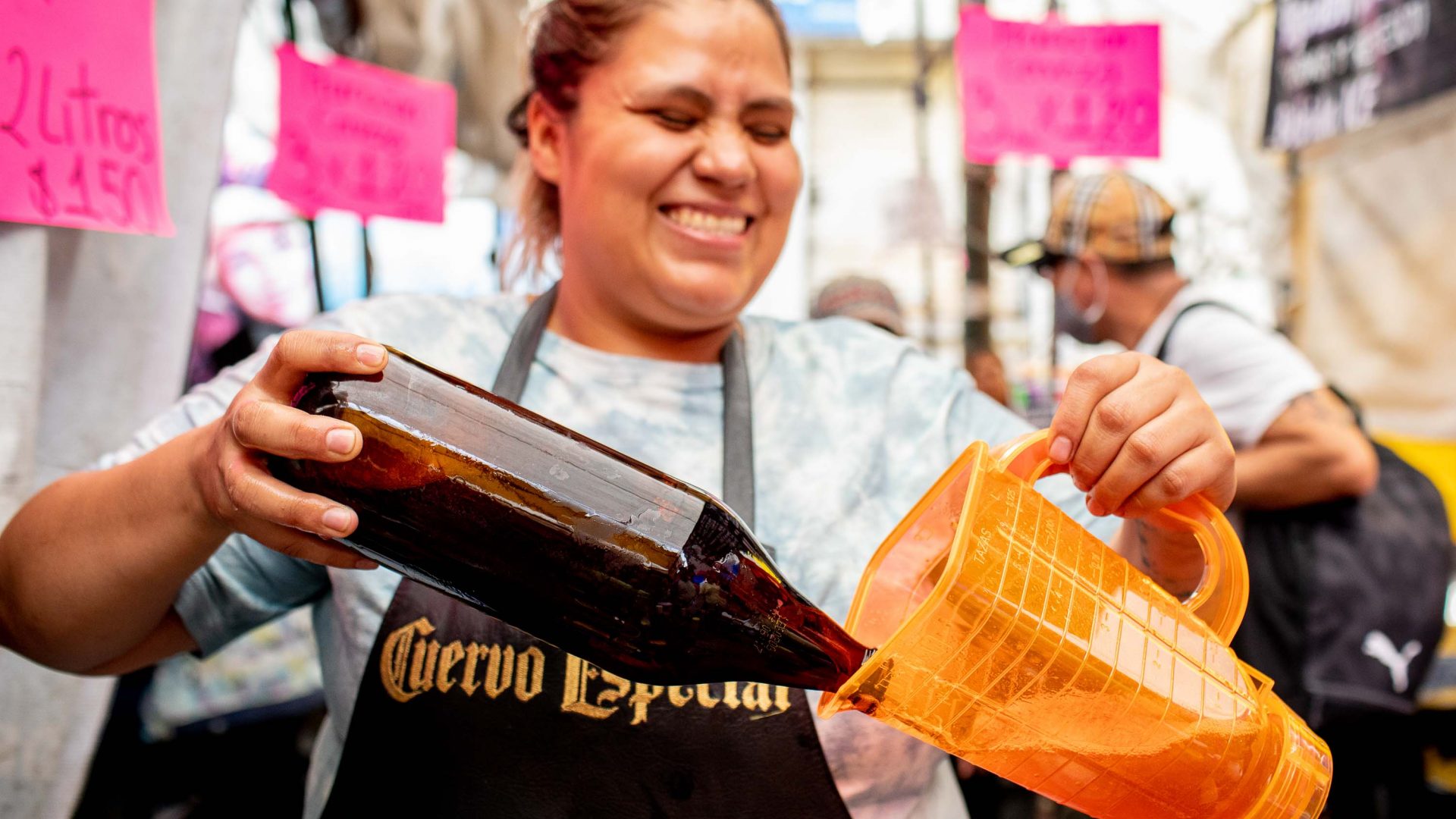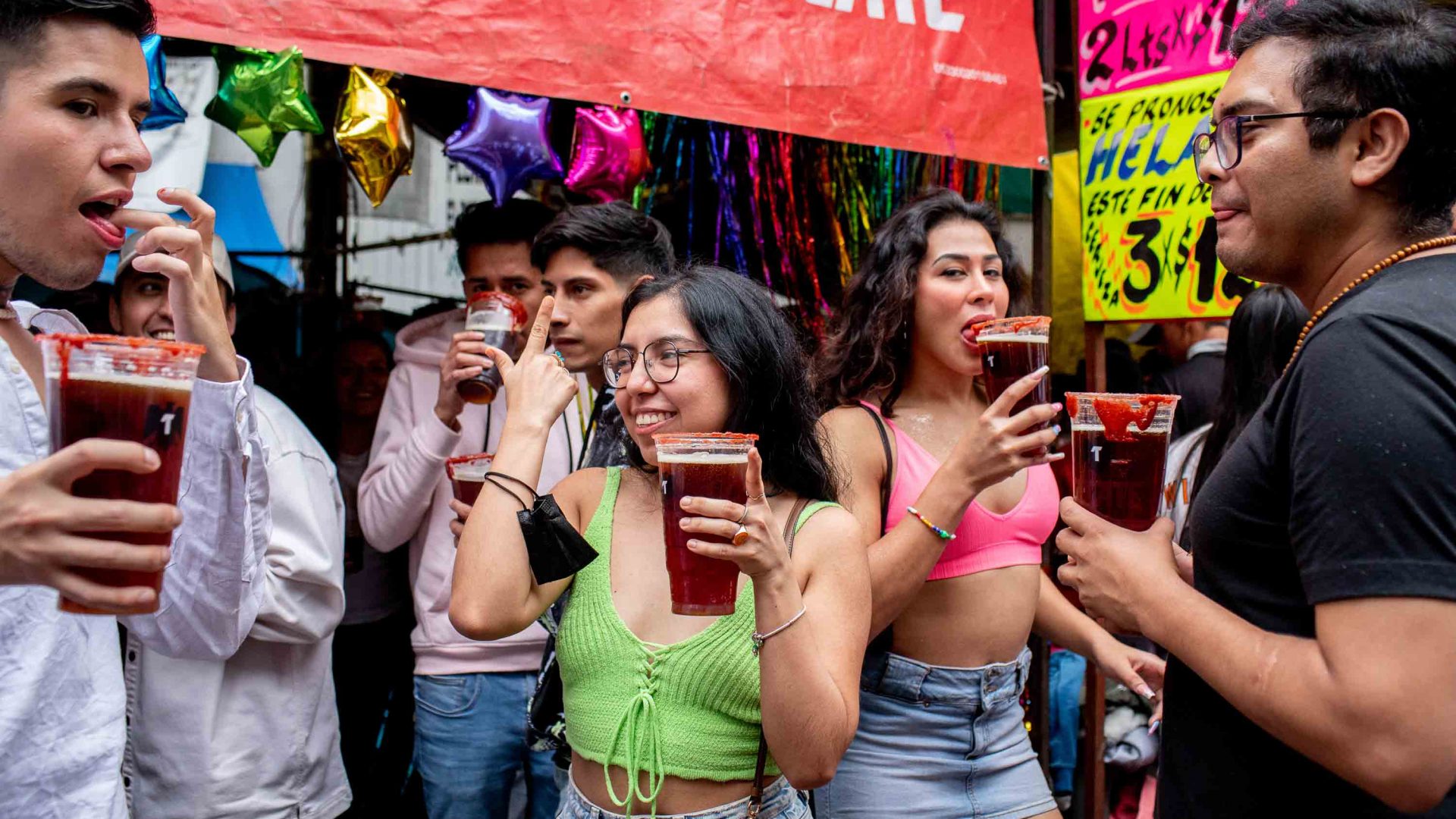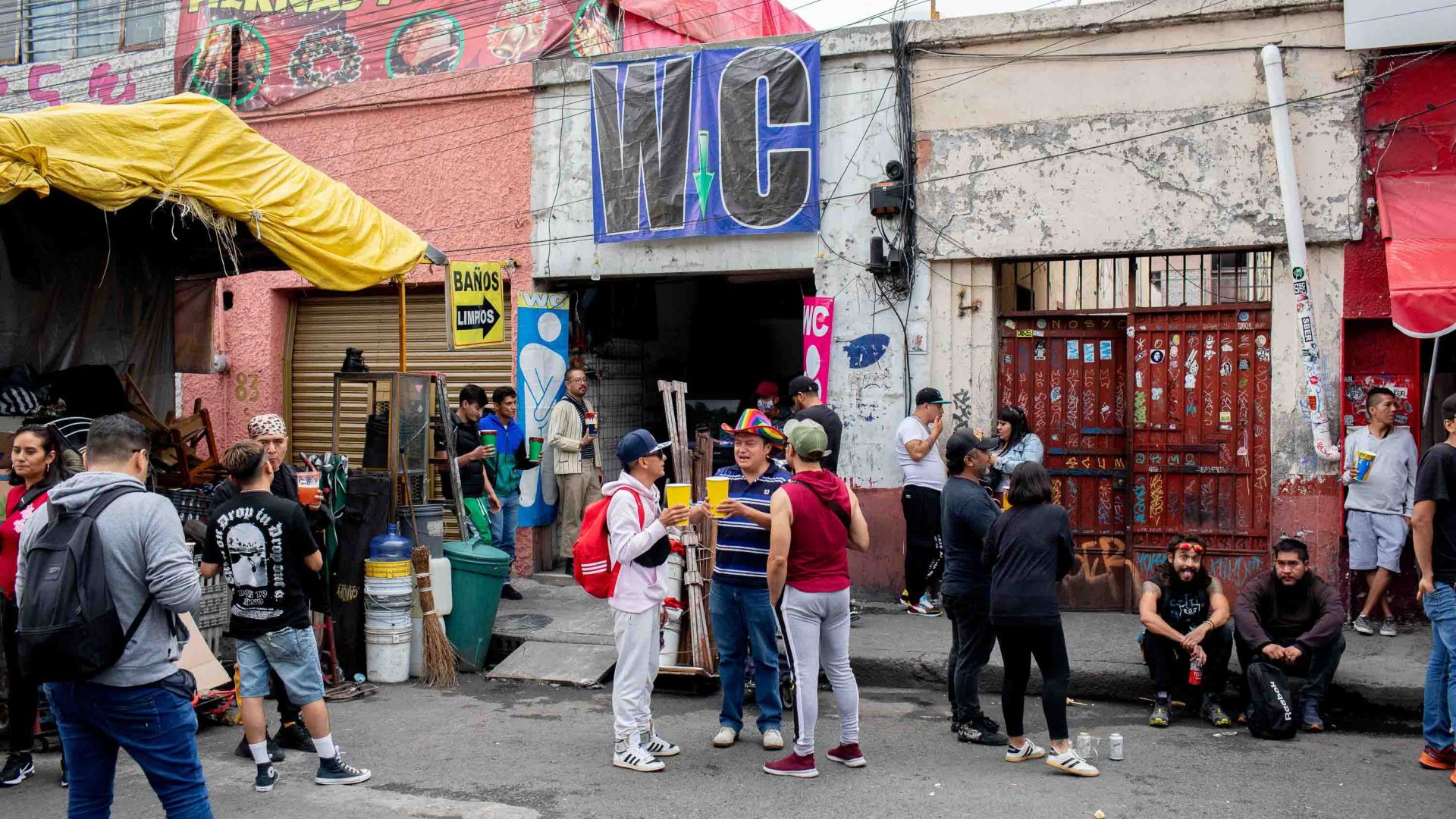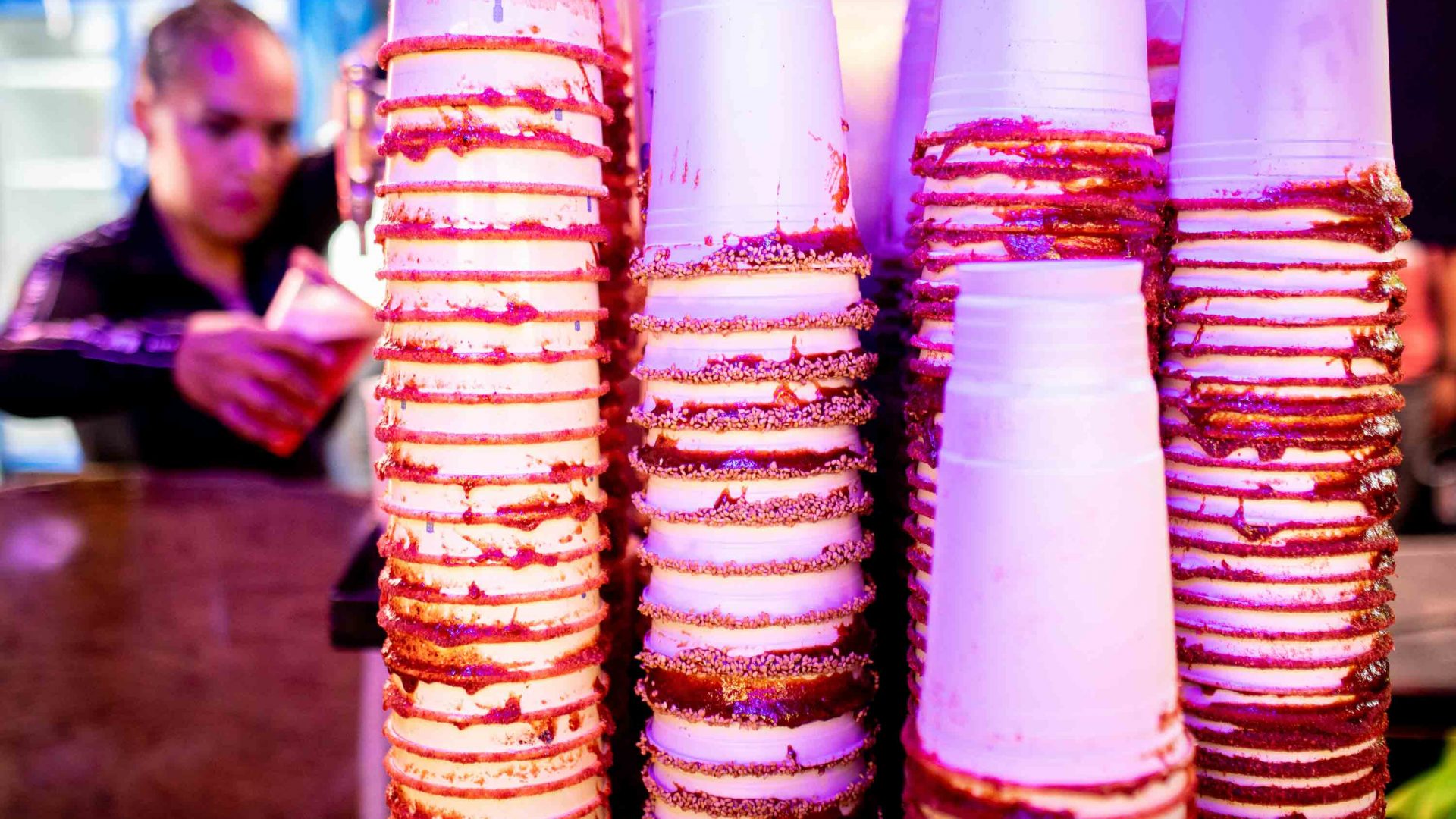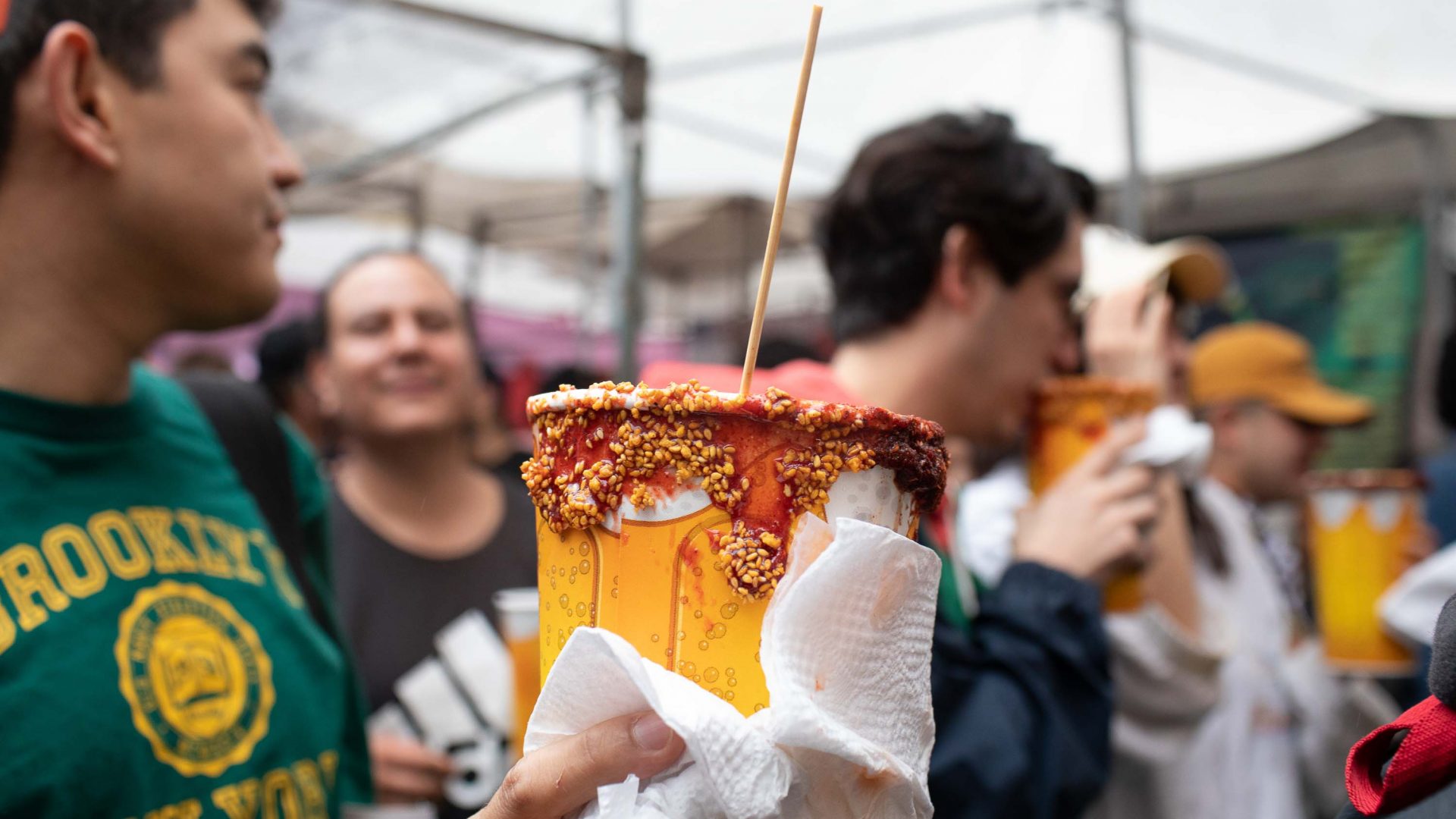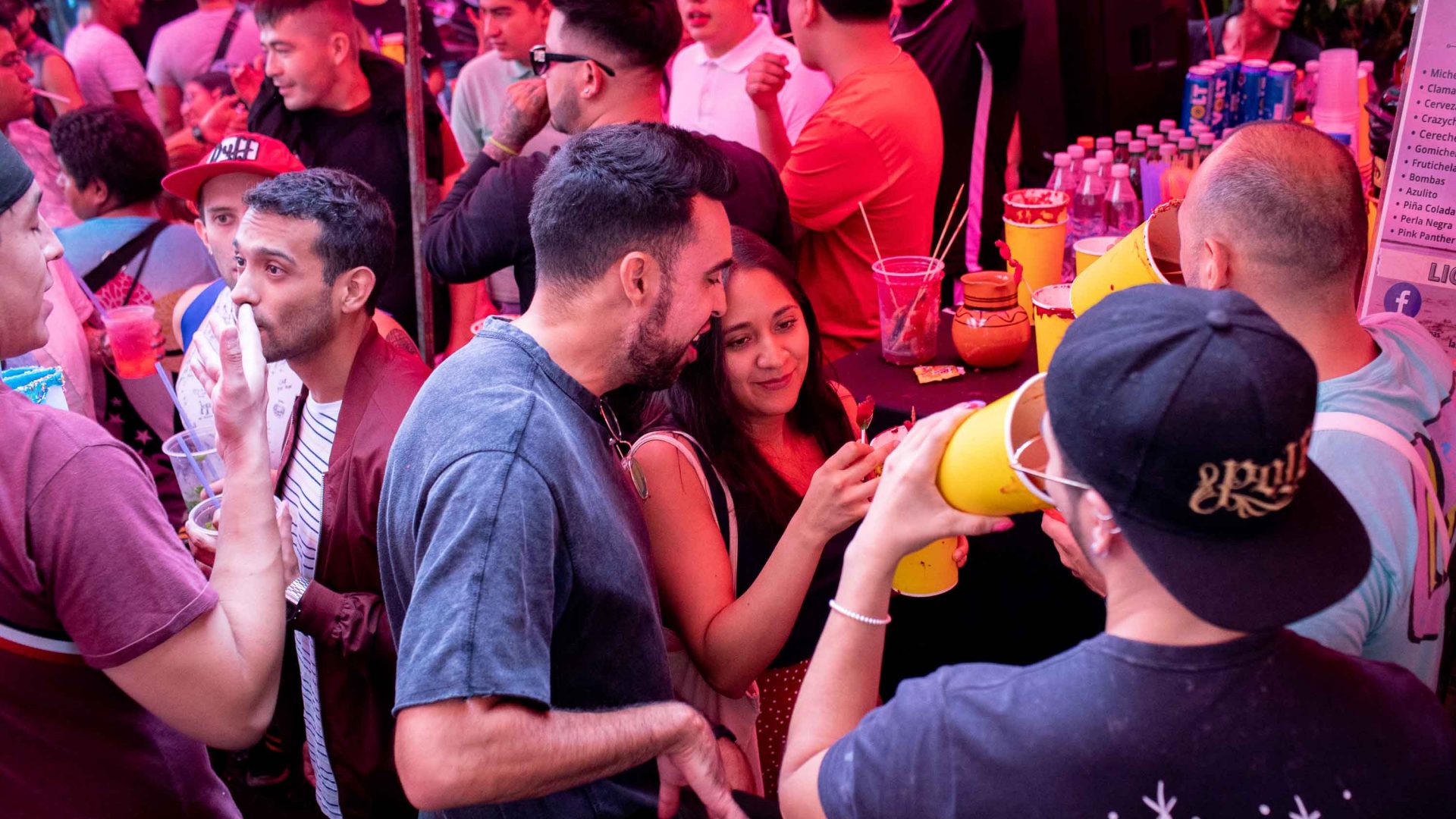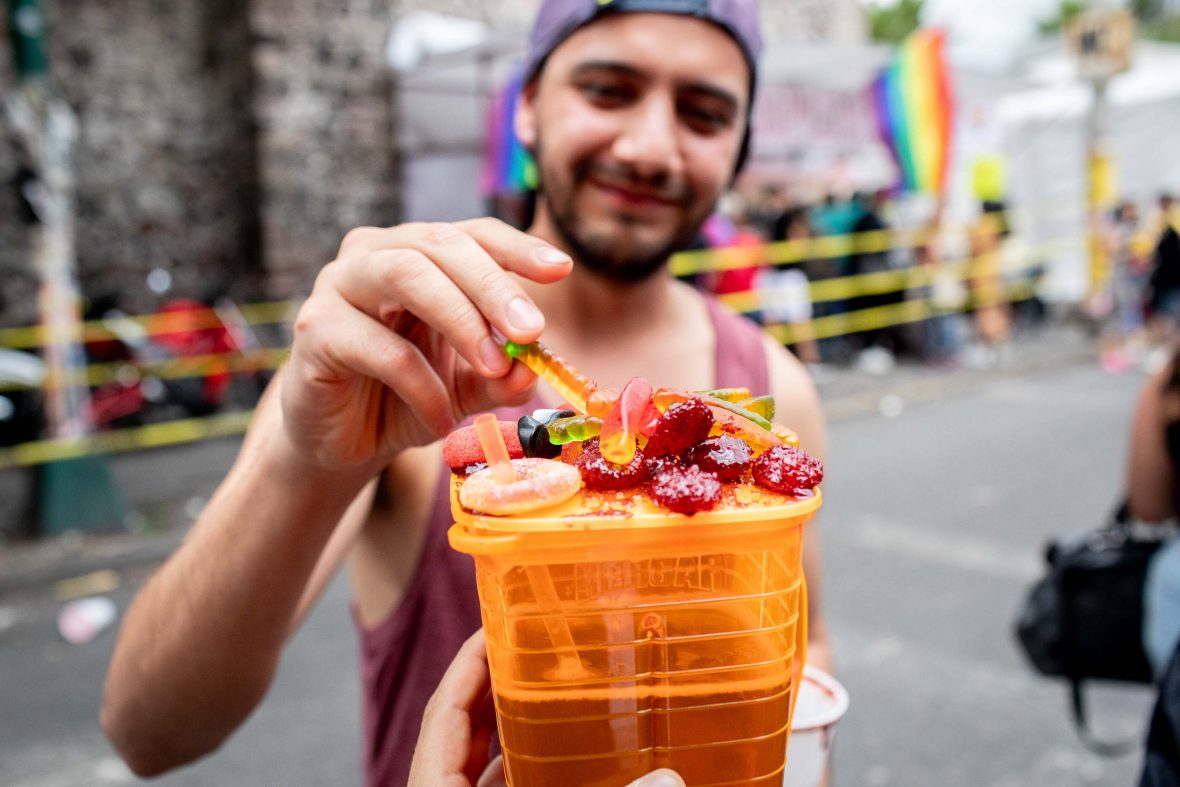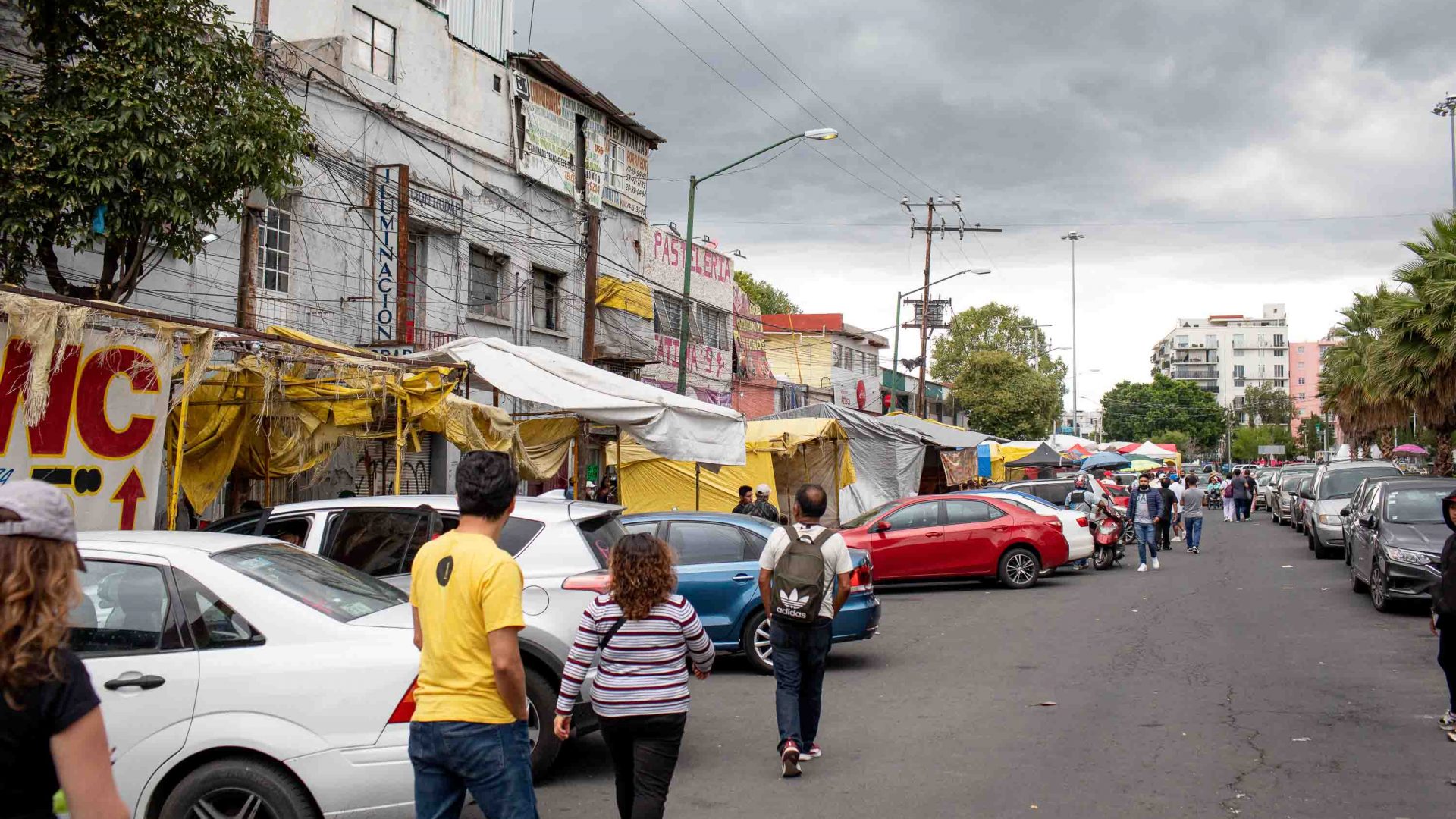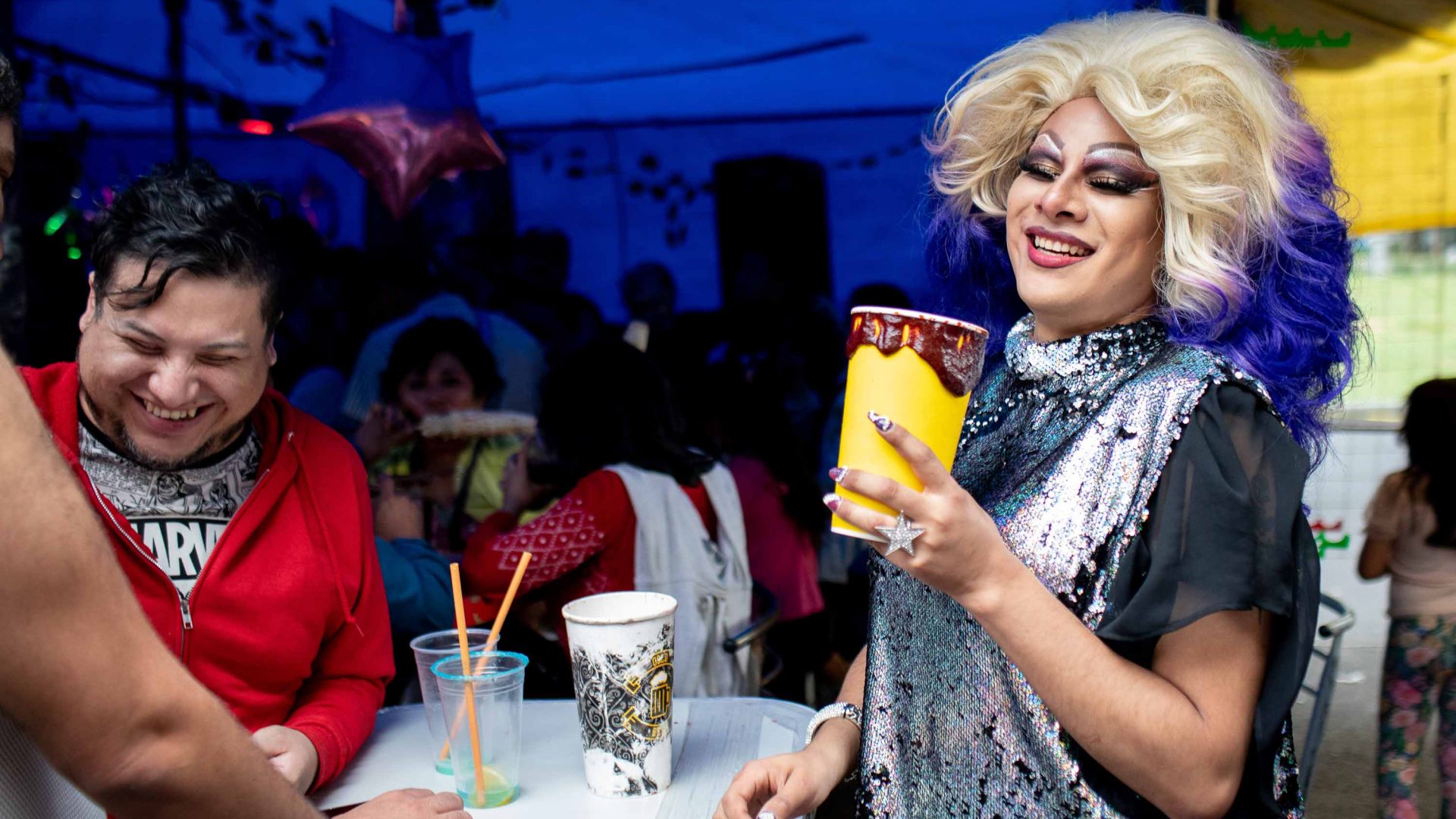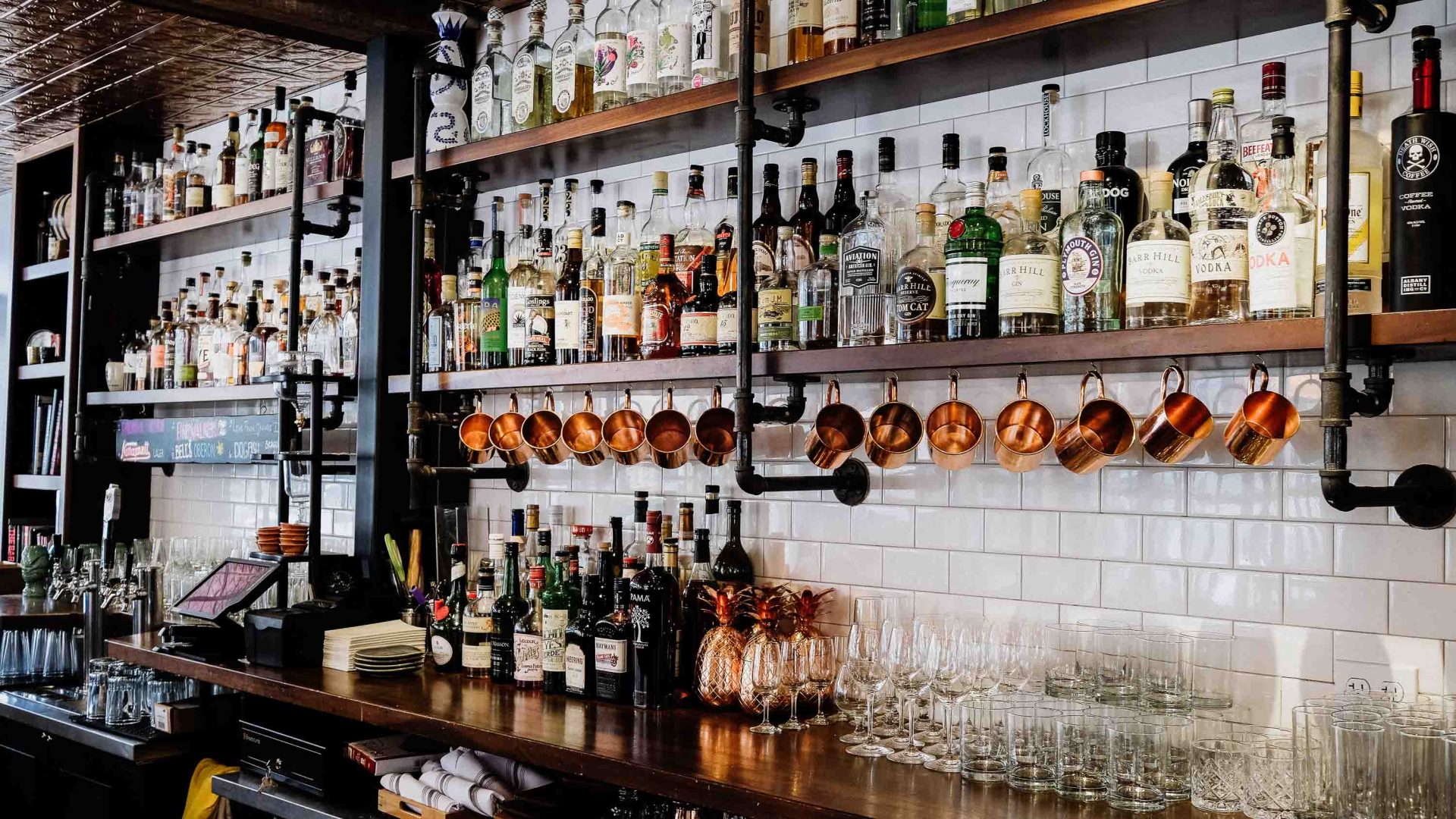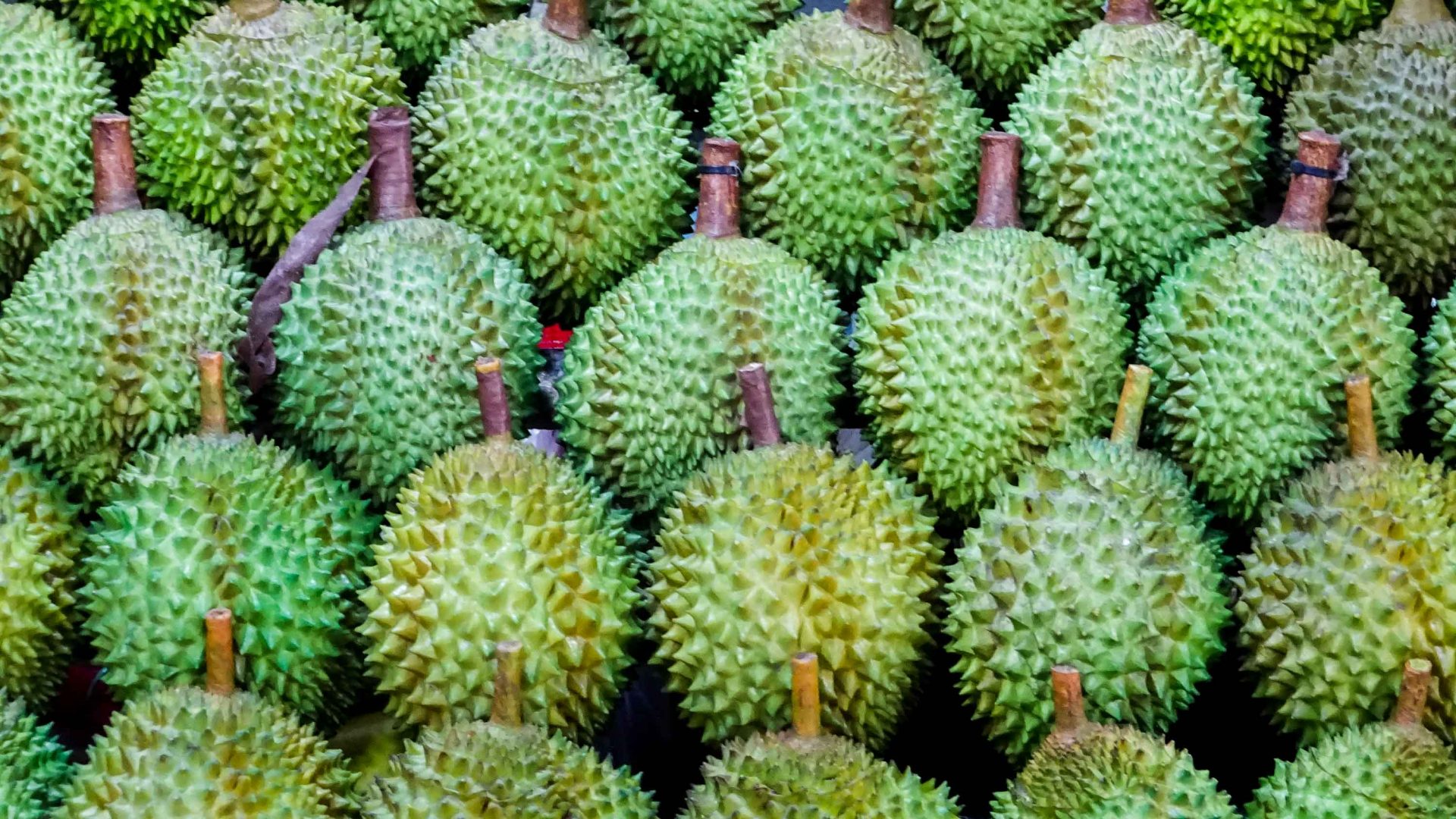Our last stop is at 777, a stand at the far end of the market that Chris insists has the best chamoy in all of Tepito. The name is simply a lucky number, but this family business serves nearly that number of different chamoy flavors to deck out your michelada with: Tamarindo is the classic and most popular, but you can also try bubblegum, green apple, strawberry, mango, cherry, pineapple, watermelon, kiwi, cucumber, blue raspberry, and more.
“Their chamoy is very candy-like,” says Chris with excitement. Indeed, while many of the other stands we passed had chamoy that was clearly a sticky liquid, this stuff is thick. Rather than licking it off with a sip of your beer, you can take an actual bite of it. They sell their chamoy to-go, as well—it makes for a tasty topping to slices of fruit.
Aside from the flavor, Chris has developed an attachment to 777—and Tepito, in general—because visiting has made him feel more like a local in his adopted city. The vendors remember his order (“extra lime and extra salt”) and frequenting the market has improved his Spanish fluency and understanding of local culture. I can certainly see how. While normal Mexican Spanish is riddled with slang, the lingo used in the barrio is something else. While texting with one michelada vendor to confirm their hours, my native Spanish-speaking partner and I were both completely stumped about what the word aki translated to, until I realized it was a chatspeak misspelling of aquí, the word for ‘here.’
“Learning the local dialect and moving through different social classes helps you feel more like part of the community,” says Chris. “Don’t close yourself off to something because it sounds ‘too foreign.’ Everyone at the tianguis in Tepito is just there to have a good time. On a Sunday afternoon, there’s nowhere in the city that I’d rather be.”




